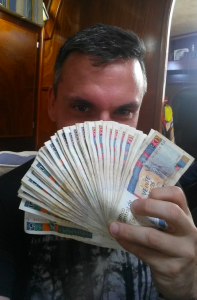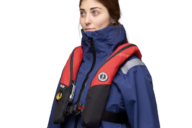Cruising Compass is pleased to have received dispatches this winter from cruiser Sissy Puedes in Cuba and will be sharing them over 
the coming weeks. Here’s the sixth installment…
Cuban Bargains: Why you can get a personal pizza, a beer and an ice cream cone for under a dollar, but a marina slip costs $50.
Of Cuba’s many complications, the one foreigners most frequently grapple with is its dual currency system. Once officials okay a preliminary international check-in, the captain heads for the nearest Casa De Cambio (CADECA) for the 55 Convertible Units of Currency (CUC) to complete formalities, plus another 25 for each visa. Dollars are not legal tender, but they can be exchanged at 1:1 before a ten percent penalty is tacked on, making the rate .87 CUC.
Foreigners can change CUC into moneda nacional at the rate of 24 pesos to the CUC.
The only Cubans at market stalls are selling, not buying. Even rock-bottom prices are too spendy for a $20 per month budget. Prices are fixed collectively by sellers, not bargaining. If a pineapple costs ten pesos — less than half a CUC — change will be given in moneda. Adding meat will triple the bill; the butcher charges in CUC.
To further muddle matters, Cubans refer to both kinds of money as pesos. Everyone seems to be eating three-peso ice cream cones and drinking one-peso cafecitos, but if a waiter tells a foreigner that the espresso is one peso, he means one CUC.
The steadfast rule is that anything only a foreigner would do—stay at a casa particular, buy beef or luxury itemslike soap and toothpaste, own a boat—is priced in CUC. The state owns all the marinas and sets prices at between .20 and .80 CUC per foot per day.
Don’t even think about trying to bargain.











